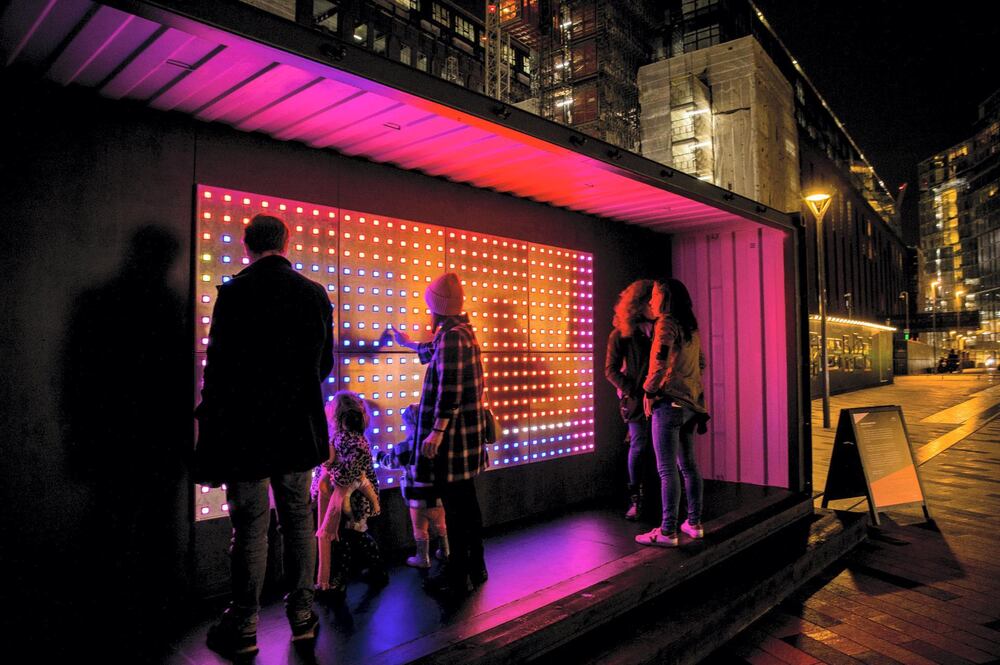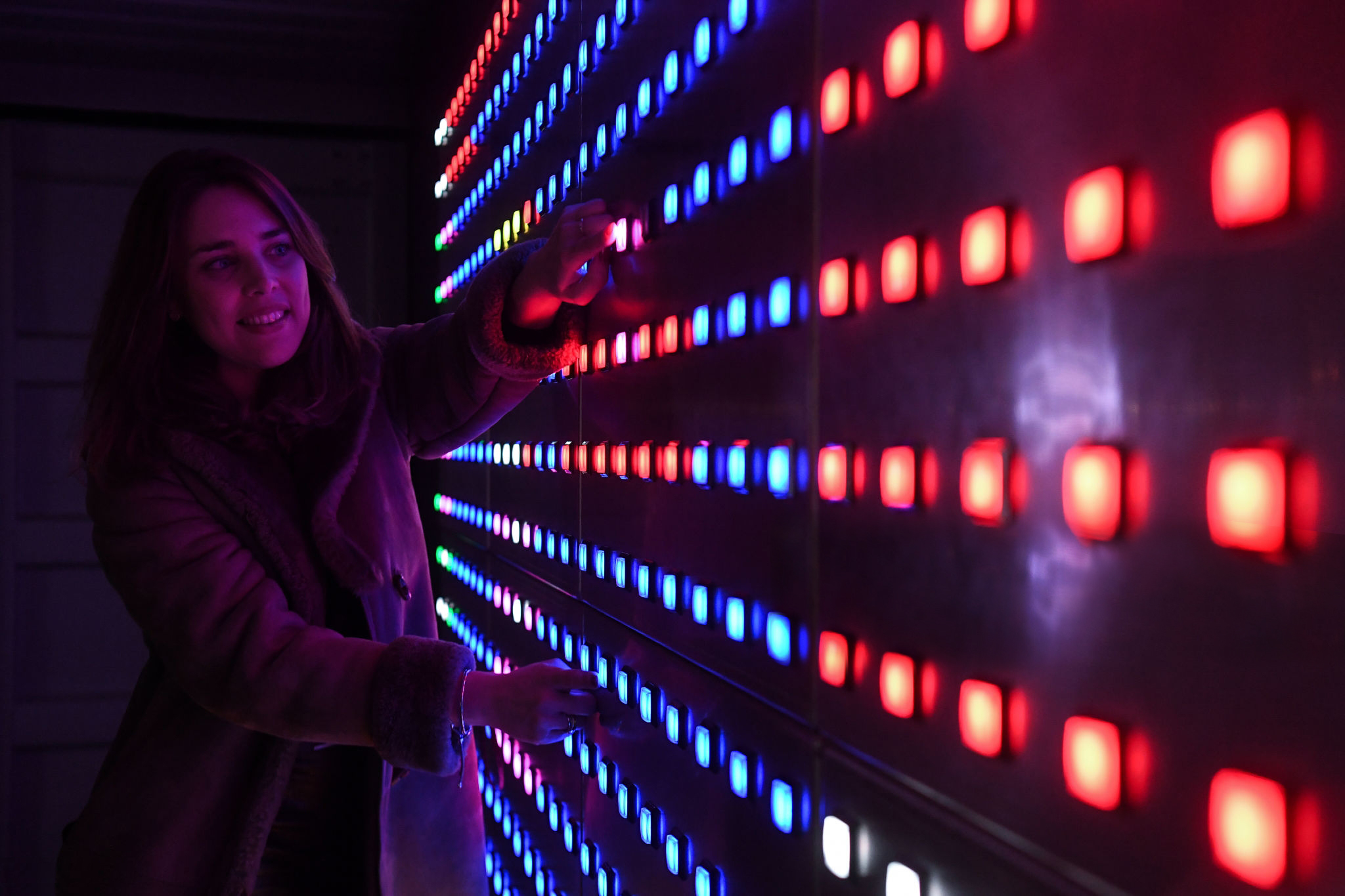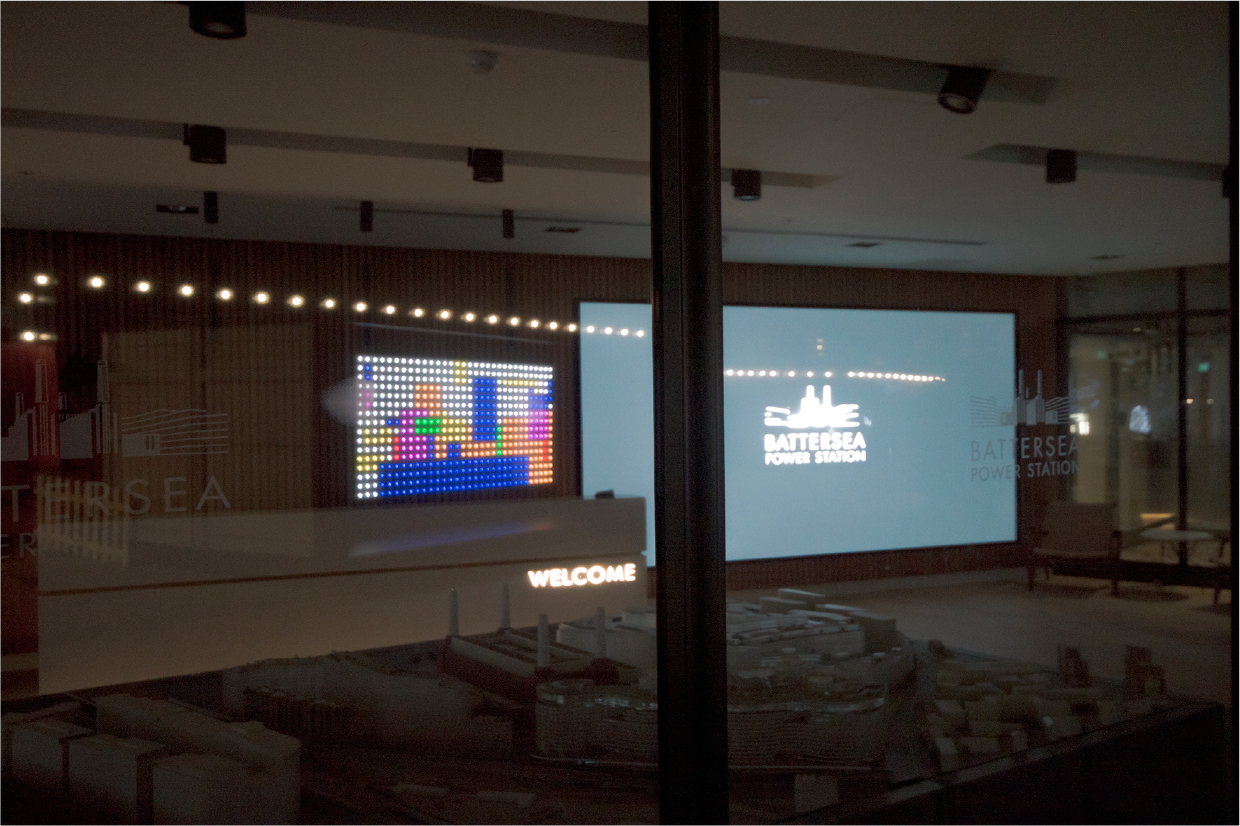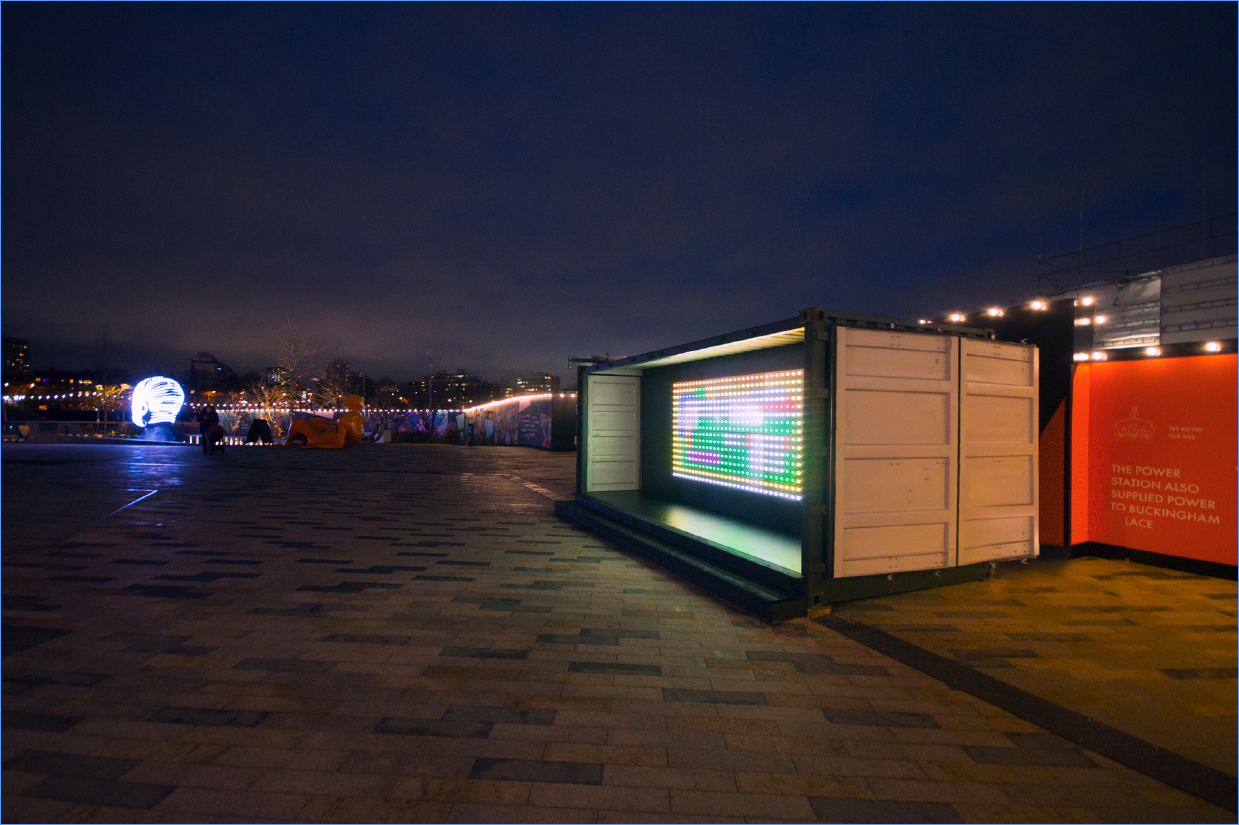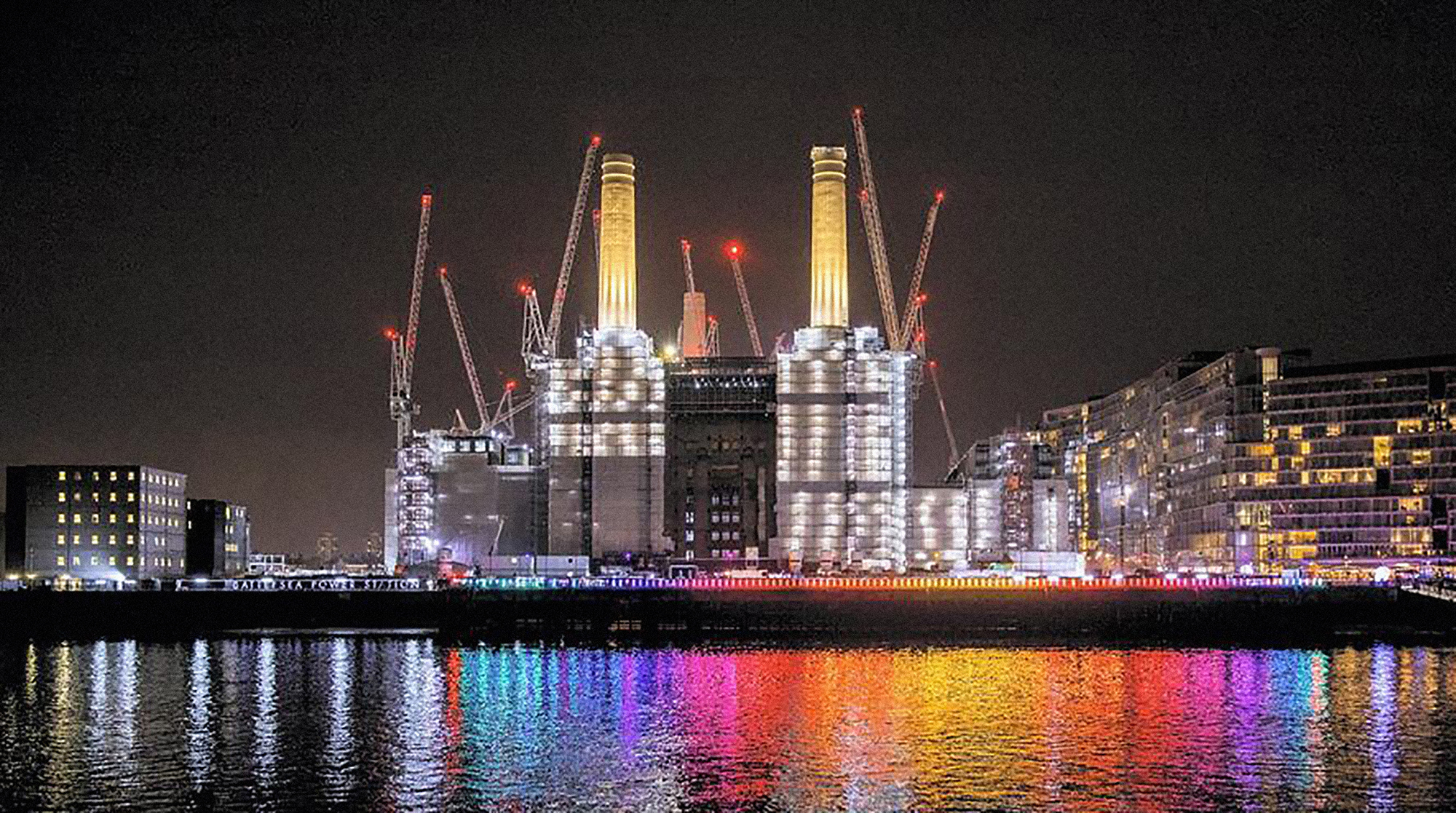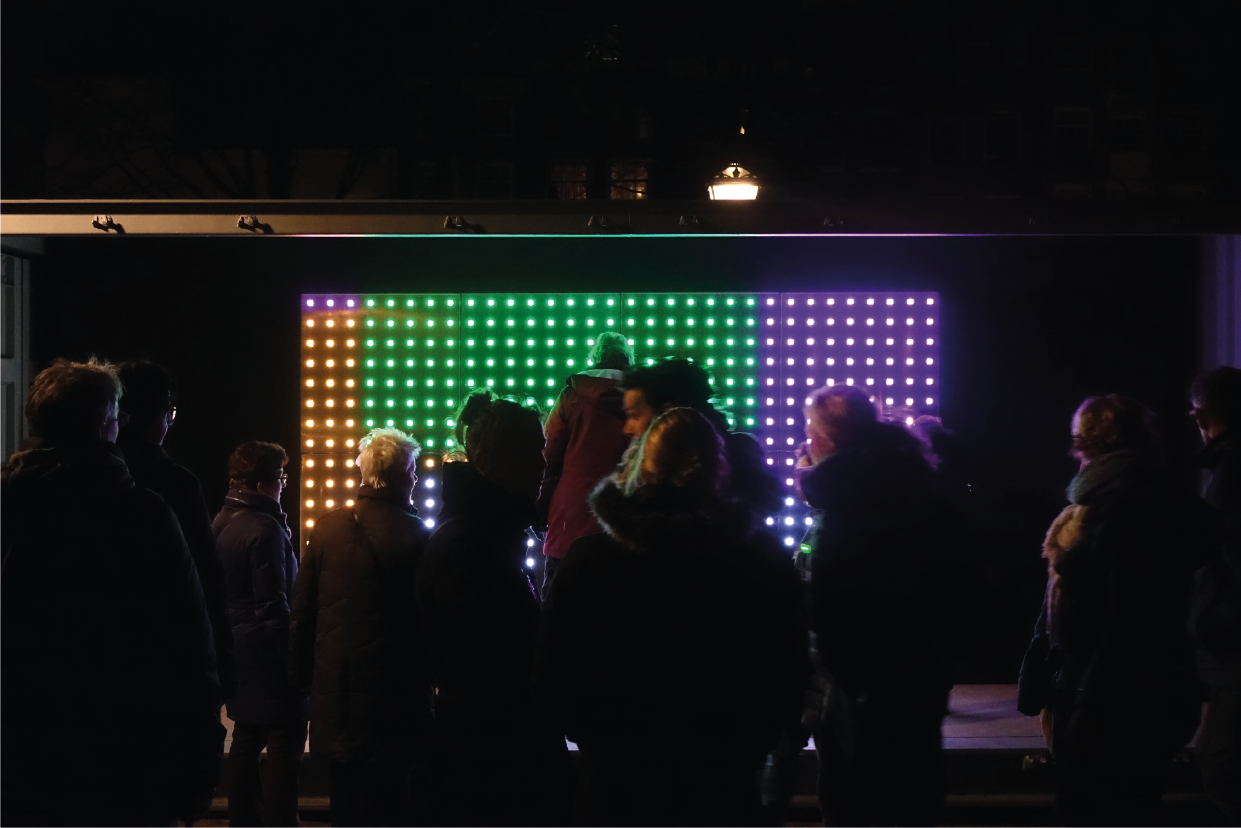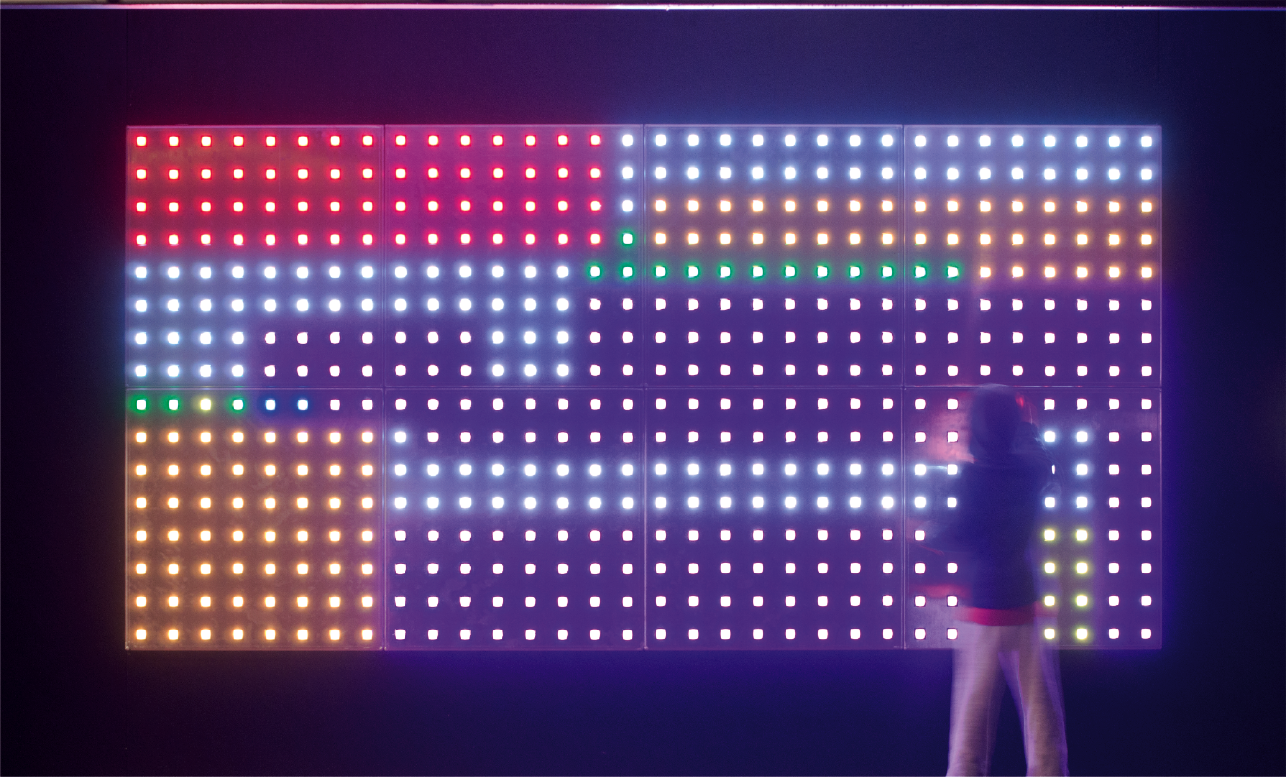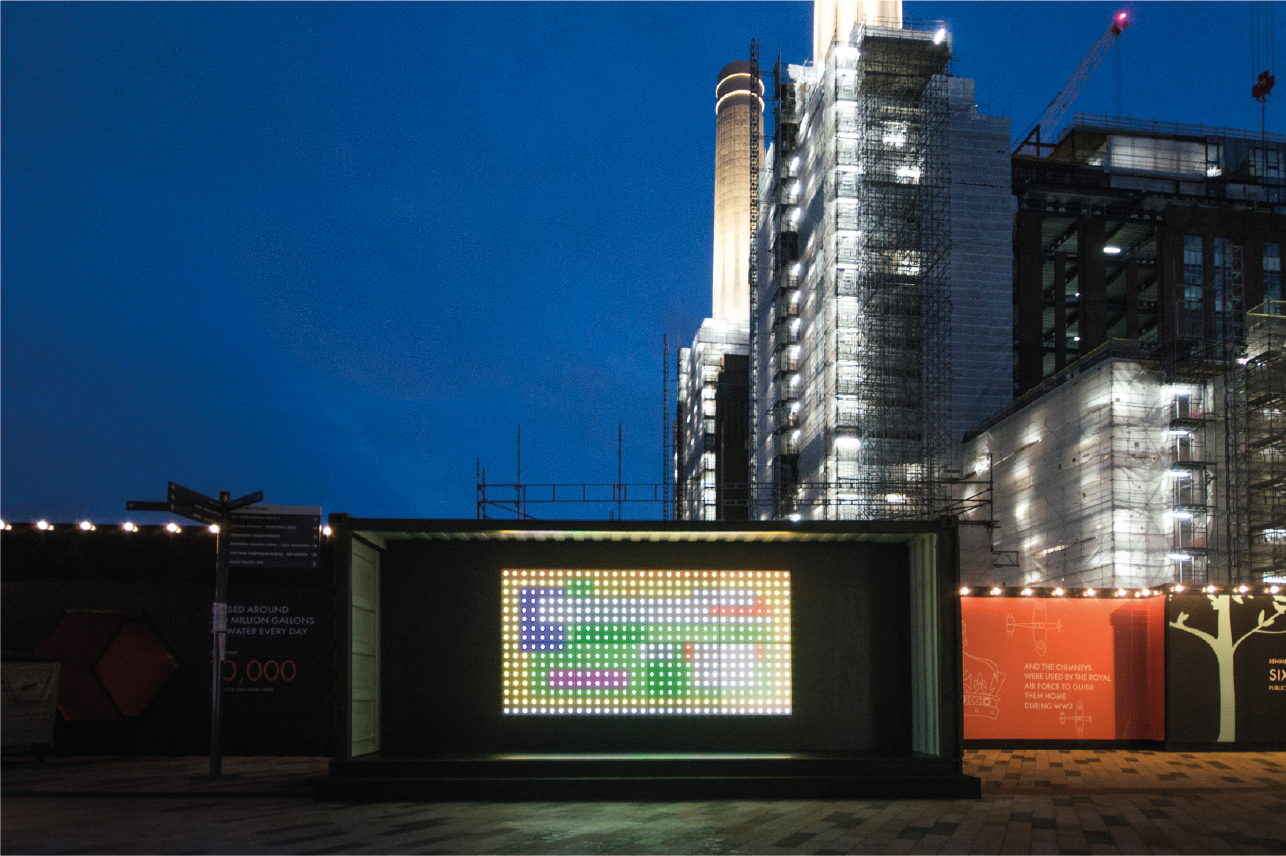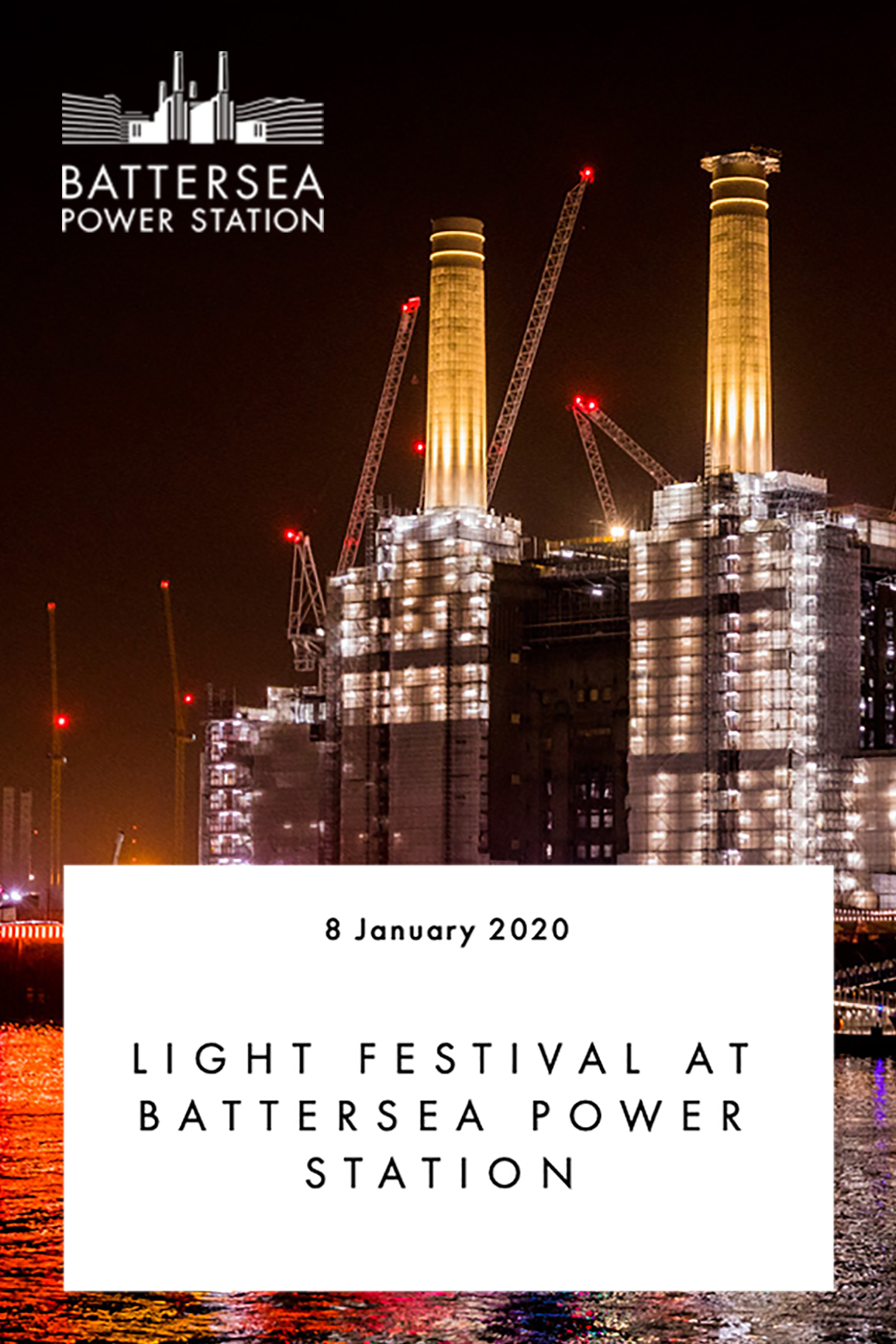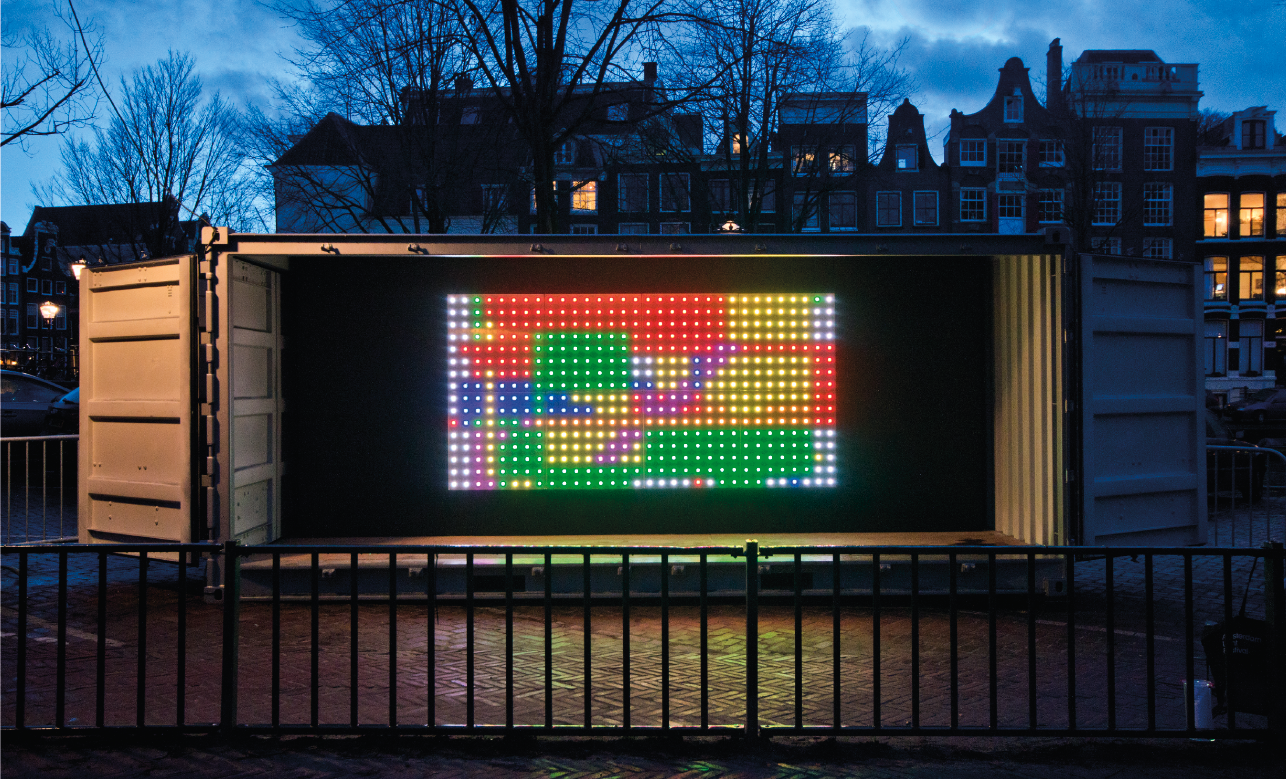Battersea Power Station will be brightening up the dark winter evenings with four spectacular light installations commissioned by the Light Art Collection, the experts behind the Amsterdam Light Festival. The installations will be making their UK debut at the festival. […] Action>Reaction consists of a large screen with a thousand buttons that after being pressed light up in a variety of different colours like single pixels. An interactive piece, Action Reaction 2.0 invites visitors to make patterns by themselves or together. [1]
“From Dutch artist Sjimmie Veenhuis comes Action Reaction 2.0. The installation consists of a large screen with a 1,000 buttons that, upon being pressed, light up in a variety of different colours akin to individual pixels. The interactive piece invites visitors to make their own patterns. Veenhuis’s aim is to give the humble button, which is ultimately a mediator between us and technology, its due. From doorbells and television remotes to social media likes, pushing a button is almost always associated with a sought-after positive experience.” [2]
“Visitors are invited to press a thousand buttons, creating different patterns of colour. There doesn’t seem to be any
logical order as to what happens when you press the buttons, but it is easy to become deluded that there is. It was exiting to interact with the piece on a childlike level.” [3]
“In examining his practice could it be argued that Veenhuis in utilising the haptic immersion, with buttons has developed a ritualistic process, that enables the viewer to subconsciously fulfil themselves and is comparable to the primordial man’s engagement with ritual as a means of returning closer to the cosmogonic origin.” [4]
“Viewer interaction acts as a locus of the artist’s work and in terms of the dialogue that forms between viewer and “abstract entity” it is exciting to consider the tumultuous power dynamic as each decision made by the viewers alters another button within the piece.” [4]
“Through his practice, Veenhuis removes the utilitarian purpose form these objects and therefore, the value is rooted not in its function but rather the fact the artist and people choose to interact with it. In terms of myth it is interesting to consider Veenhuis as the cosmogonic creator, who choosing to engage with these materials has manifested a presence and formed his own myth.” [4]
